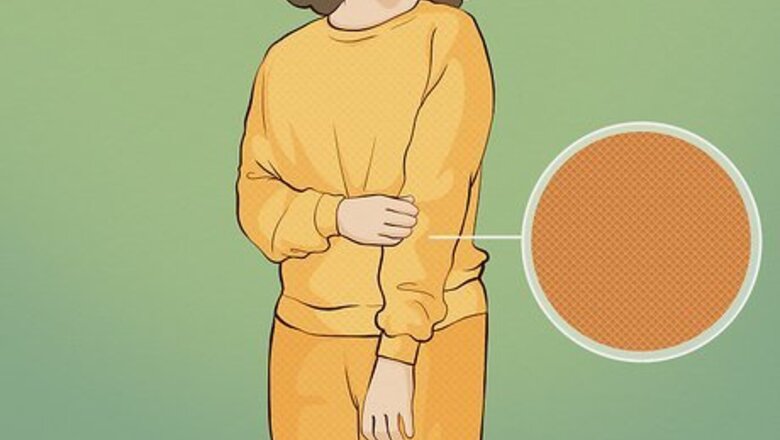
views
Putting on the Base Layer

Look for a “waffle” like texture. These textures are better at wicking moisture away from your body. They'll also keep you warm in bitterly cold conditions. Choose a layer with a texture that looks most like a waffle.
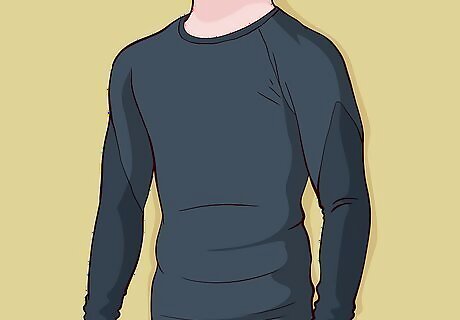
Wear a thermal top. Choose a thin, wicking, thermal shirt fitted to your chest. Opt for synthetic materials like polypropylene. Wool is also be a good option as it naturally regulates heat, wicks sweat and has antimicrobial properties. Wool also retains 80% of its heating properties when wet. Avoid cotton as it doesn't have the wicking power you'll need on the slopes and loses it's heating properties when wet. Make sure the top doesn't slide around while you walk.
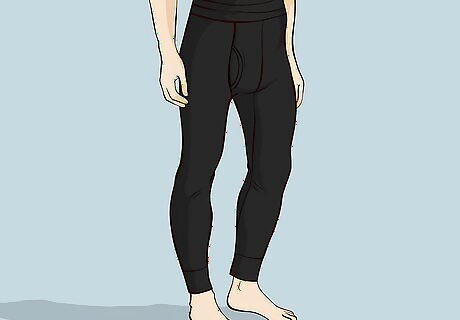
Put on thermal pants. Make sure these are thin and fitting against your legs. This next-to-body fit will keep you warm. Choose a synthetic fabric to wick away moisture.
Putting on the Middle Layer

Opt for fleece. This fabric is available in different weights and is great for wicking and insulation. Cotton won't wick moisture or insulate as well. Choose fabric that's a cross between form-fitting and bulky. This way, you'll get the insulation and wicking power you need without struggling to get your outer layer on over the middle layer.
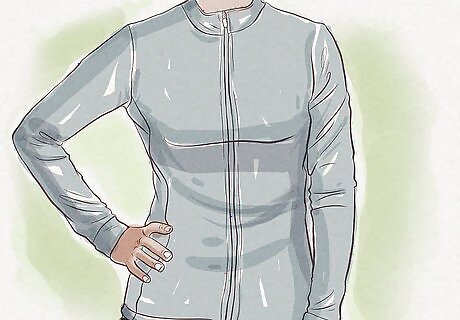
Put on a mid-layer sweater. Wear a sweater or jacket with a half- or full-zip with standup collar. This will keep you warmer. Look for underarm zippers known as “pit vents” to allow sweat to escape properly.
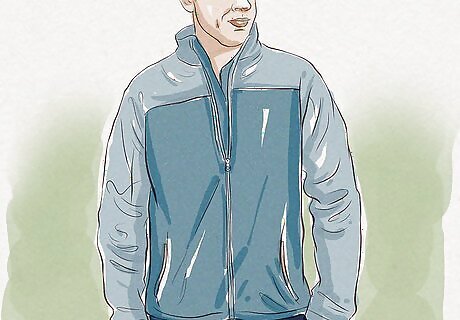
Wear a soft shell for windy conditions. Soft shells are form-fitting yet stretchier for comfort. They come in wind-resistant and windproof varieties. Look for soft shells with a waterproof DWR coating on the outside.
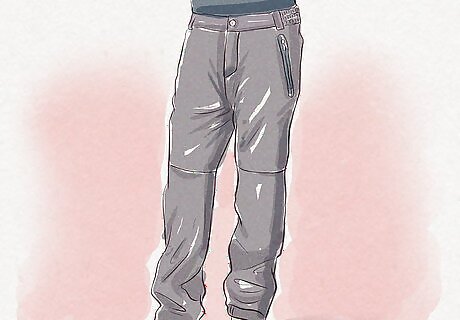
Put on mid-layer pants, if necessary. This layer might be optional with current fabric technology for base and outer layers. Ask the shop staff for help if you're new to skiing. If you do need mid-layer pants, go for something relatively tight to allow the outer layer to slide on with no problem.
Putting on the Outer Layer
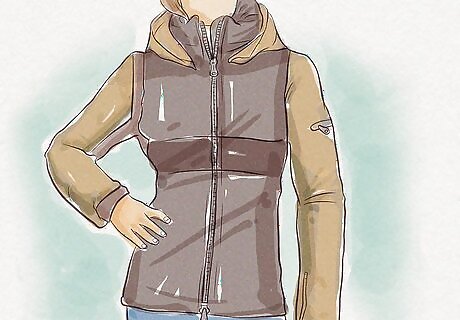
Slide on a ski jacket. Opt for something roomy enough to comfortably accommodate your layers but not too loose or bulky. Make sure it's a waterproof and properly insulated ski jacket - not a hoodie or a sweatshirt. Ski jackets use special fabrics, insulation and features to keep you warm. These include waterproof-breathable fabrics, heat-retaining insulation, and a powder skirt or closeable cuffs and hem.
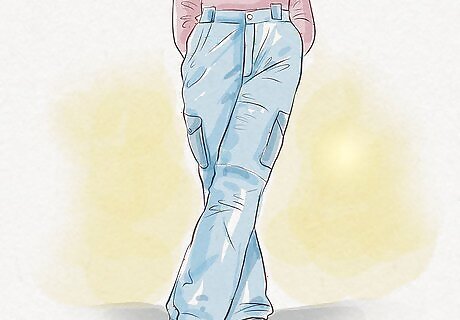
Put on ski pants. Go for actual ski pants made for the slopes. They have an inner powder cuff that you slide over your boots to prevent snow from getting in. Your pants should fit well and allow you to move comfortably.
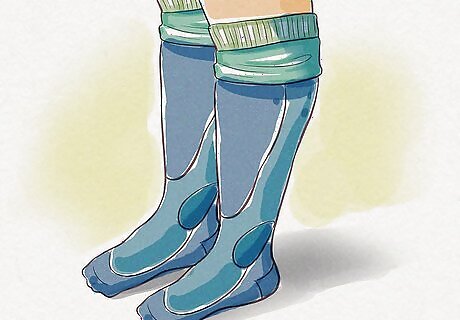
Wear ski socks. Wear only one pair of socks to keep your feet from sweating too much. Your socks should be thin but warm. If you're renting boots, choose slightly thicker socks for comfort. Make sure they have padding to protect your shins when they press against your ski boots.
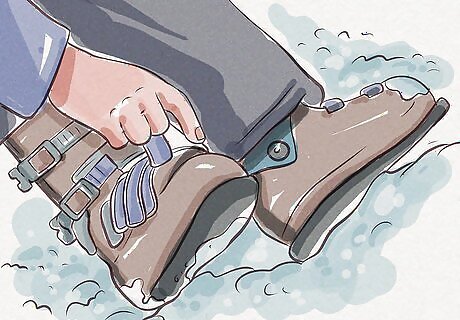
Put on ski boots. Any other boots won't clip to your skis. Buy or rent boots that fit the width of your feet. Look for boots with good flexibility. If you're skiing recreationally, avoid stiff boots designed for racing.
Protecting Your Head, Face, and Hands
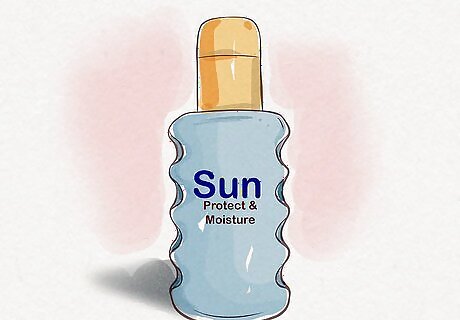
Protect exposed skin with sunblock. No matter what the conditions are on the slopes, this is a must. You can get a sunburn even if it's cold and overcast. Opt for SPF 15-30, depending on how fair your skin is. Don't forget about your lips! Slather on lip balm with an SPF of at least 15.
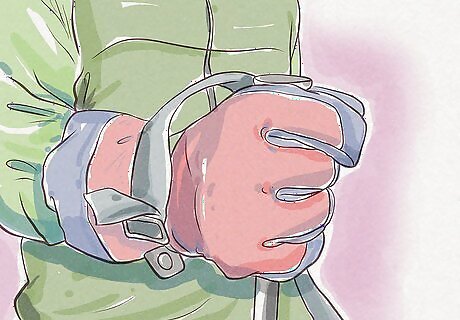
Put on ski gloves. Make sure that they're designed for skiing. Regular gloves won't give you the protection you need. Ski gloves are thicker and have a rubber lining on the outside for easy grip. If you plan on skiing in a very cold climate and/or harsh terrain, buy gloves with wrist protection and a built-in inner glove.
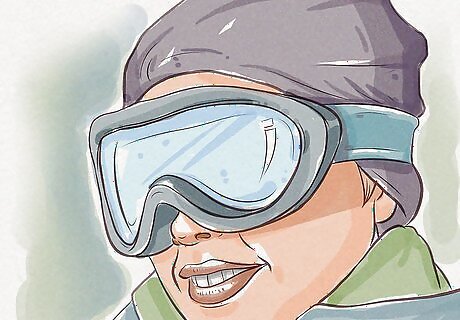
Wear goggles. Spend the extra money on high-quality goggles. They'll protect you from snow blindness and help you to navigate cloudy conditions with few shadows. They'll also protect you from flying debris that can get caught in your eyes. When you come back from the slopes, allow your goggles to dry outside their protective case to prevent mold buildup.
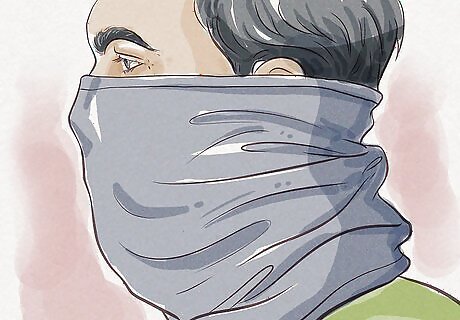
Slip on a gaiter. A gaiter is a felt tube that you slip on your neck. Pull it over your mouth on especially cold days. Always keep the bottom of the gaiter under the collar of your ski jacket.
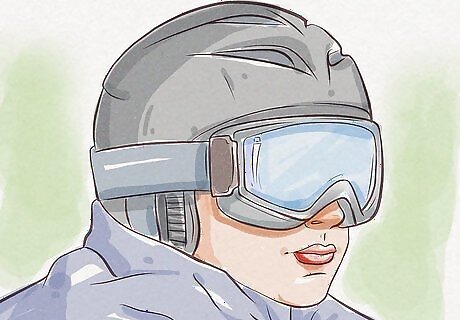
Put on a helmet. A hat will keep your head warm, but a helmet will protect you from head injuries. Make this a rule for any condition you could be skiing in. Helmets come in basic low-tech varieties or high-tech forms with headphones if you want to listen to music as you ski. For added warmth, wear a form-fitting hat under the helmet.




















Comments
0 comment